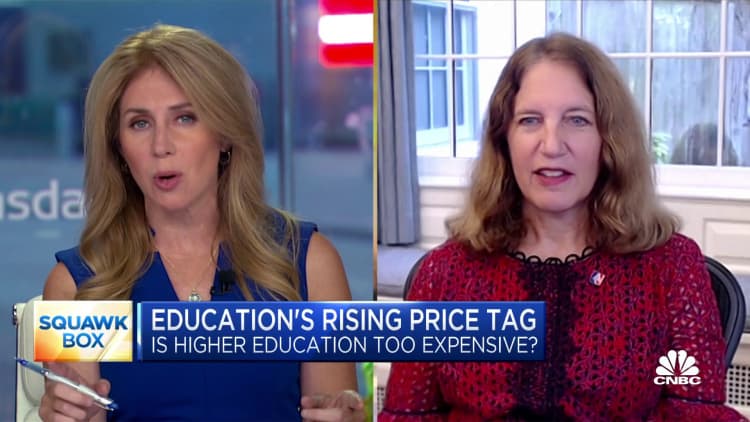
A simplified Free Application for Federal Student Aid is set to roll out by the end of the month.
However, the new FAFSA may launch with outdated inflation figures, which could mean many students “will get less financial aid than they deserve,” according to higher education expert Mark Kantrowitz.
“It is a pretty big deal,” he said. “We are talking about thousands of additional dollars that families will have to pay for college.”
While it’s hard to quantify exactly how many will be affected, “millions of students could receive less aid,” according to Kalman Chany, a financial aid consultant and author of The Princeton Review’s “Paying for College.”
A problem with the FAFSA affordability calculation
The new, simplified FAFSA form uses a calculation called the “Student Aid Index” to estimate how much a family can afford to pay. But as it stands, the forthcoming FAFSA relies on old consumer price index figures from 2020, which don’t account for the recent runup in inflation.
More from Personal Finance:
Fewer students are enrolling in college
The new FAFSA will be available by Dec. 31
What to consider before refinancing a student loan
The Consolidated Appropriations Act stipulated that the U.S. Department of Education is required to update the SAI tables every year based on the latest CPI data.
This year, though, the Secretary of Education didn’t make those updates in time.
The Department of Education has said that it doesn’t plan to update those tables this year, but will update them for the 2025-26 aid cycle.
“In prior years it wouldn’t matter all that much because inflation was low,” Chany said. In this case, “the numbers are significantly understated.”
“Given the high inflation in the past few years, the tables should be adjusted by a tad more than 18%,” he added.
All families of four in this application cycle with adjusted available income over $35,000 will be affected by the failure to make inflationary adjustments, with middle- and higher-income students the hardest hit, according to Kantrowitz. There will be less of an effect on lower-income students whose expected family contribution was already $0.
For example, a typical family in New York with adjusted available income of $100,000 could be expected to contribute $12,943 instead of $9,162 toward their annual college costs — a difference of nearly $4,000 in aid, according to calculations by Kantrowitz.
Issues mount ahead of the new FAFSA’s launch
“The FAFSA simplification, in part, was intended to expand eligibility,” Kantrowitz said. “This fumble with the formula, among other changes … makes it harder, especially for middle-income families,” he said.
For instance, the Department of Education also said it will no longer give families a break for having multiple children in college at the same time, effectively eliminating the “sibling discount.”
Experts say this is just the latest complication in a process that has already caused confusion and frustration. And there may be additional issues when the form finally launches online on or before Dec. 31 after a significant delay.
“This is not going to be streamlined,” Chany said. “It’s going to be very messy.”

